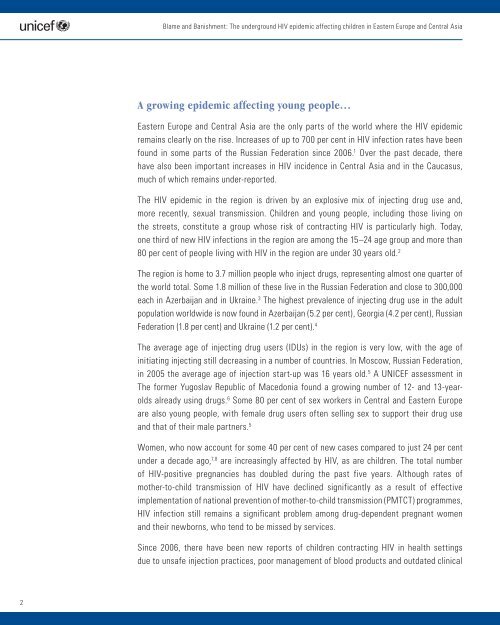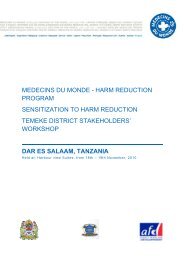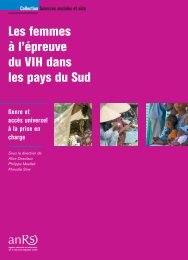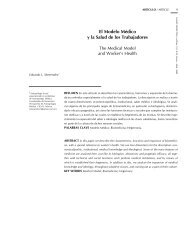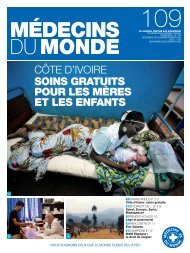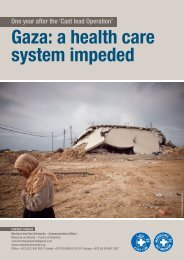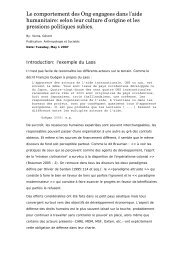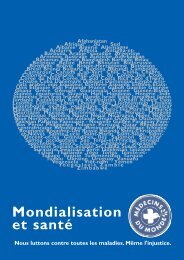Blame & Banishment - Médecins du Monde
Blame & Banishment - Médecins du Monde
Blame & Banishment - Médecins du Monde
You also want an ePaper? Increase the reach of your titles
YUMPU automatically turns print PDFs into web optimized ePapers that Google loves.
<strong>Blame</strong> and <strong>Banishment</strong>: The underground HIV epidemic affecting children in Eastern Europe and Central Asia<br />
A growing epidemic affecting young people…<br />
Eastern Europe and Central Asia are the only parts of the world where the HIV epidemic<br />
remains clearly on the rise. Increases of up to 700 per cent in HIV infection rates have been<br />
found in some parts of the Russian Federation since 2006. 1 Over the past decade, there<br />
have also been important increases in HIV incidence in Central Asia and in the Caucasus,<br />
much of which remains under-reported.<br />
The HIV epidemic in the region is driven by an explosive mix of injecting drug use and,<br />
more recently, sexual transmission. Children and young people, including those living on<br />
the streets, constitute a group whose risk of contracting HIV is particularly high. Today,<br />
one third of new HIV infections in the region are among the 15–24 age group and more than<br />
80 per cent of people living with HIV in the region are under 30 years old. 2<br />
The region is home to 3.7 million people who inject drugs, representing almost one quarter of<br />
the world total. Some 1.8 million of these live in the Russian Federation and close to 300,000<br />
each in Azerbaijan and in Ukraine. 3 The highest prevalence of injecting drug use in the a<strong>du</strong>lt<br />
population worldwide is now found in Azerbaijan (5.2 per cent), Georgia (4.2 per cent), Russian<br />
Federation (1.8 per cent) and Ukraine (1.2 per cent). 4<br />
The average age of injecting drug users (IDUs) in the region is very low, with the age of<br />
initiating injecting still decreasing in a number of countries. In Moscow, Russian Federation,<br />
in 2005 the average age of injection start-up was 16 years old. 5 A UNICEF assessment in<br />
The former Yugoslav Republic of Macedonia found a growing number of 12- and 13-yearolds<br />
already using drugs. 6 Some 80 per cent of sex workers in Central and Eastern Europe<br />
are also young people, with female drug users often selling sex to support their drug use<br />
and that of their male partners. 5<br />
Women, who now account for some 40 per cent of new cases compared to just 24 per cent<br />
under a decade ago, 7,8 are increasingly affected by HIV, as are children. The total number<br />
of HIV-positive pregnancies has doubled <strong>du</strong>ring the past five years. Although rates of<br />
mother-to-child transmission of HIV have declined significantly as a result of effective<br />
implementation of national prevention of mother-to-child transmission (PMTCT) programmes,<br />
HIV infection still remains a significant problem among drug-dependent pregnant women<br />
and their newborns, who tend to be missed by services.<br />
Since 2006, there have been new reports of children contracting HIV in health settings<br />
<strong>du</strong>e to unsafe injection practices, poor management of blood pro<strong>du</strong>cts and outdated clinical<br />
2


